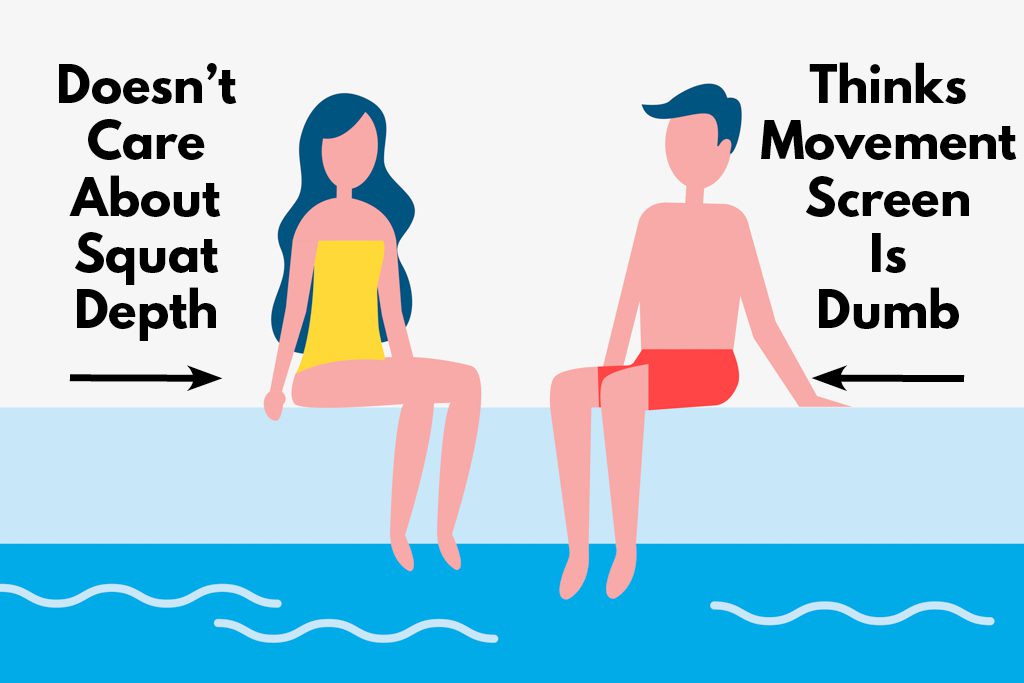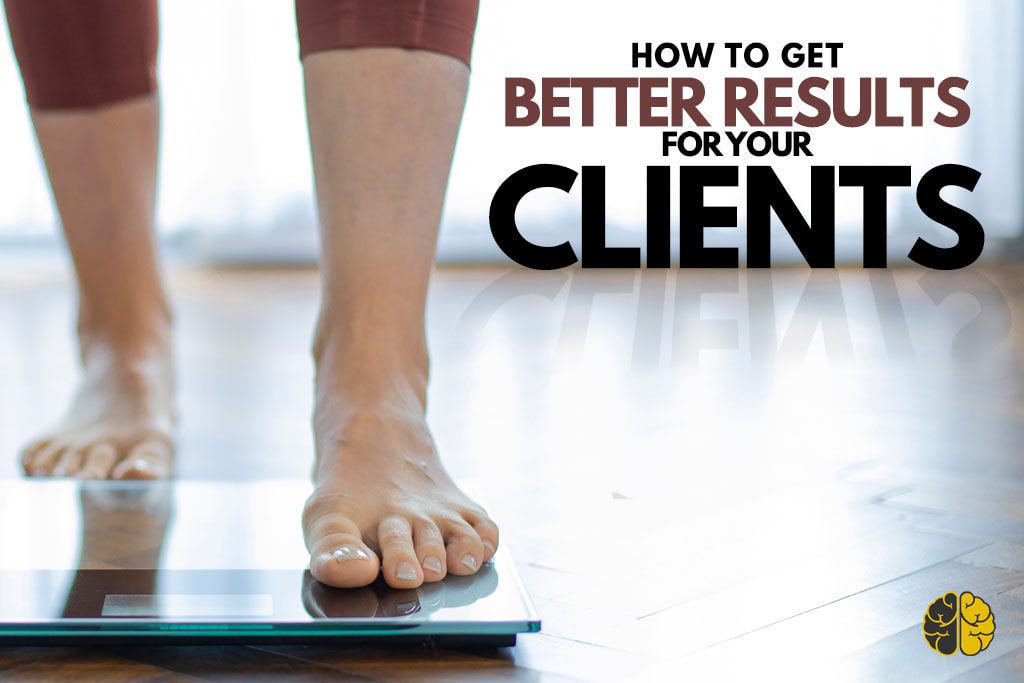“My swimsuit still doesn’t fit, Chris.”
I’d been working with Laurie for three months. She’d made great strides: she could squat to depth, jog for a full mile and deadlift 185 lb. She was sleeping better, and she’d even quit smoking.
And she didn’t really care about any of it.
Laurie had hired me to do one thing: fit into her bathing suit. I’d failed. She quit. And I got a lesson: that what I want for my clients is less important than what they want for themselves.
Who Cares About What?
How do you keep clients longer?
How do you get more referrals?
How do you get people talking about you?
You get them better results.
In this series, I’m going to talk about the elephant in the room: that if your clients aren’t getting the results they want, they’re going to leave.
And you can kiss referrals and recommendations goodbye when they go.
First Things First: Know Their Real Goal
We start every client with a consultation (usually called a No Sweat Intro) because we want to know their goals. Then we can tell them whether we can help or not.
Imagine visiting a doctor’s office and being told, “Sit in the exam room with the others, and the doctor will be around with a great multivitamin!”
Maybe the multivitamin will help with your problem … a little. But the value of the doctor’s service is directly dependent on how well he or she understands your problem. Right?
Or imagine you visit the dentist. You sit in your chair and the hygienist comes around to see you. “We’re whitening everyone’s teeth this week!” That’s great—but you really need a filling.
Doctors and dentists are professionals. You and I are professionals, too. The difference in our rates is really in our perception of value. That value comes not from having the best pill but from making the best of all possible prescriptions.
Start with, “What would you like to accomplish?”
Second: Measure What They Want to Measure
“I like the gym, but CrossFit isn’t for me. I’m terrible at this! I think I’ll try the YMCA or spin class or something.”
I remember when I found the Functional Movement Screen. I thought, “This will be a great way to show my clients how much they need my coaching!”
So I tested the next client to walk through the door. Yep—I found some movement faults! Gold, Jerry—gold!
Then she walked outside and called her husband. She said, “I’m bad at this. Come and pick me up.”
She came in because she wanted to stop running and smoking and starving but keep her weight down. For all I know, she went back to long-distance running, smoking and starving herself. I failed her because I measured the wrong thing.
If your clients want to lose weight, measure their weight—not their squat depth. Later, they might want to improve their mobility. But let them decide when it’s time.
Third: Map the Journey for Them
You know it’s not going to be easy. So do they.
But if you show them that you have a plan, they’ll trust you enough to let you guide them.
Start with their goal. Work backward until you’ve identified the very first step they can take. Then tell them that step and the price for your help on Step 1.
I’ll tell you more about writing your clients a plan in the next post in this series.

Fourth: Test!
No plan survives first contact with the enemy.
Your first prescription for a client might be good, but it won’t be perfect.
At some point, you’re going to have to measure progress.
You should compare results with the starting point. Measure the same things. Add more metrics if you want, but if the if the swimsuit won’t fit, they will still quit.
When we train coaches at our sister company, Two-Brain Coaching, we call this process “Learn, Design, Deliver, Refine.” We show coaches how to deliver individual prescriptions while training people in groups. We show coaches how to combine sleeping, eating, movement and mindset to create optimal client progress. But as a gym owner, here’s the takeaway lesson:
All that matters is what the client wants.
Build your business around that. Choose your equipment, your programming, your tools—even your methods—to get them the results they want.
If your clients want to pose onstage, you should learn to coach bodybuilding. If your clients want to broaden their fitness base, you should learn to coach CrossFit. If your clients want to lose weight or lean out, you should learn to coach nutrition.
Good results aren’t enough to grow your business. You have to keep clients busy, happy and looking forward. You have to ask for referrals. You have to show pictures of successful clients and share stories about your clients’ success.
But before you can do any of those things, you have to actually make clients successful at the goals they care about.
Other Media in This Series
“How to Make a Prescription”
“Benefits-Based Programming”
“Assessments: A Linchpin to Long-Term Success”
“Assessing Clients With Nathan Holiday of Level Method”
“Getting Clients Results: Your Priorities”

